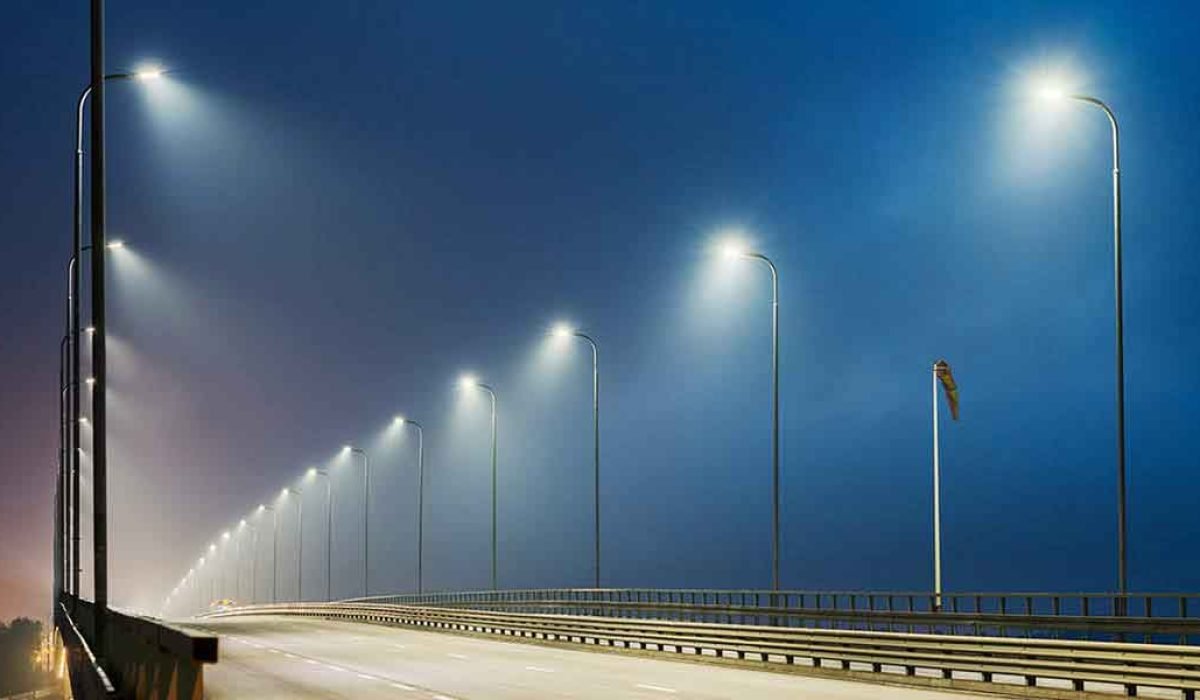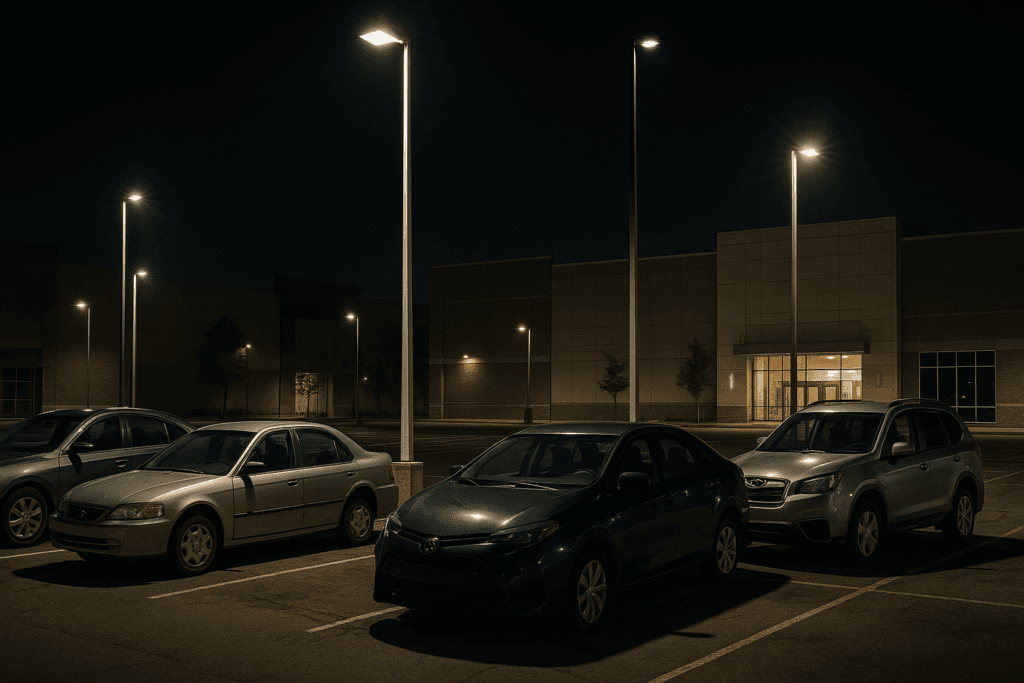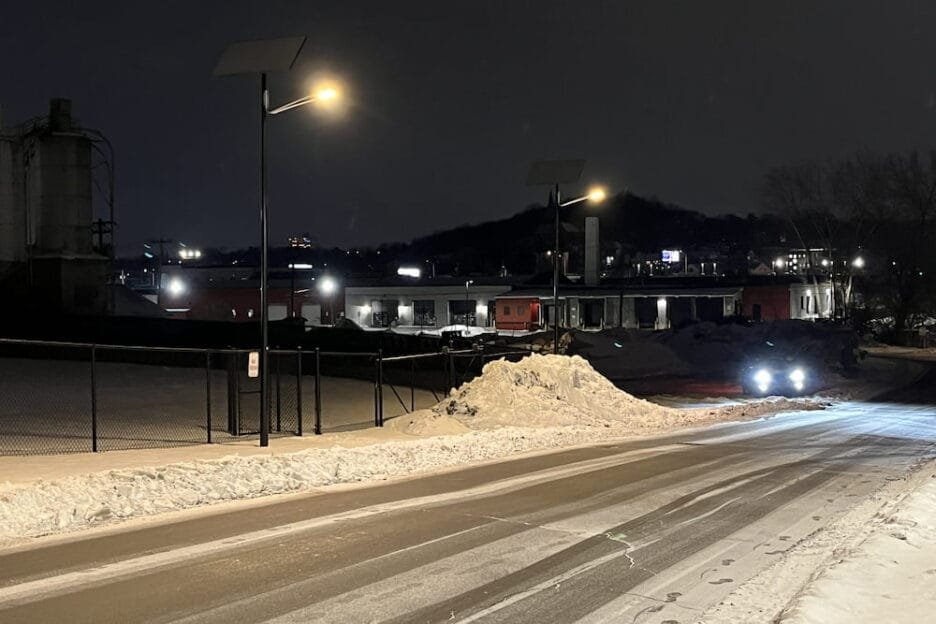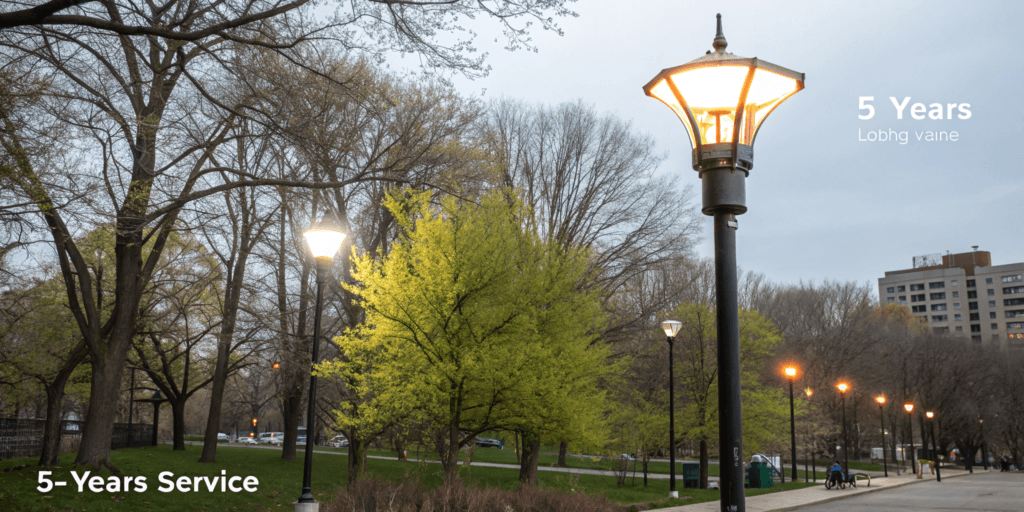In many projects I’ve worked on, unlit or poorly lit parking lots become a security risk and a cost liability. That’s why more property owners are considering solar lighting.
Solar parking lot lighting delivers reliable, off-grid illumination that enhances safety, simplifies installation, and reduces long-term operational costs.
Let me explain how I’ve applied these systems in real-world projects—and why I now recommend them for most new developments.
The Growing Need for Secure Parking Lot Lighting?
In urban planning and site layout work, one consistent challenge is how to secure open parking areas without overextending grid infrastructure.
Proper lighting deters unauthorized activity, improves visibility, and supports safety—making it a baseline requirement for parking facility design.
Dive deeper
I’ve designed lighting layouts for malls, industrial parks, and municipal parking areas across different terrains. One issue that always comes up is the balance between safety, code compliance, and energy use.
From a security standpoint, dark zones attract theft, break-ins, and even personal harm. Motion detection and surveillance systems are only as effective as the lighting they rely on. Bright, evenly distributed lighting strengthens the visual range of cameras and deters opportunistic behavior.
Traditional lighting systems often require trenching for cables, planning around power access points, and coordination with utility providers. This increases complexity, extends timelines, and bloats the budget.
Solar lighting eliminates these headaches. The systems are self-contained and can be positioned based on lighting needs—not limited by conduit routing or transformer location. In my experience, this flexibility simplifies both new construction and retrofit projects.
What Is Solar Parking Lot Lighting?
As an engineer, I look at lighting from a systems perspective. Solar lighting integrates power generation, storage, and lighting control into one modular unit.
Each light includes solar panels, a battery, and an LED fixture—working together to provide independent, all-night operation.
Dive deeper
In most of the systems I specify, solar parking lot lights consist of:
Solar Panels
These are mounted on the pole or a nearby structure. High-efficiency monocrystalline panels are preferred for limited space. Their role is to collect sunlight and convert it into DC electricity.
Battery Storage
The energy is stored in lithium-ion or LFP batteries. I generally recommend LFP for hot climates or regions requiring high discharge cycles. Battery sizing is based on daily consumption and backup days—usually 3 to 5 days for security applications.
LED Light Fixtures
We use optical lenses and wattage scaling to ensure appropriate beam spread and intensity. Typical fixtures range from 20W to 120W depending on pole height and spacing. Good fixture selection helps meet IES standards for illuminance.
Control Systems
These include dusk-to-dawn photocells, timers, and sometimes motion sensors. Smart controllers allow for adaptive dimming schedules, which helps balance performance and energy savings.
By integrating everything into a single pole-mounted system, installation is straightforward. And because the system is decentralized, there’s no single point of failure—making it more robust for mission-critical applications.
Why Solar Lighting Is Ideal for Parking Lot Security?
I’ve retrofitted several sites where traditional lighting underperformed due to grid failures or high operating costs. Solar fixed those issues.
Solar lights stay on during outages, support modern security tech, and reduce infrastructure strain in both urban and remote areas.
Dive deeper
When assessing lighting for security, I focus on five factors: uptime, brightness, cost, control, and vulnerability.
Grid Independence
Traditional lights are tied to utility power. In areas with grid instability or frequent outages, this creates blackout risks. But solar lights with adequate battery storage maintain operation through storms, rolling blackouts, or grid maintenance.
Visibility and Camera Support
Bright, neutral-white LEDs create high-contrast footage for security cameras. This enhances identification and tracking in incidents. I’ve seen up to a 40% improvement in video quality with better lighting angles and consistency.
Fast Installation
Most solar street lights are installed within a day. There's no trenching, no underground wiring, and no need to coordinate with power companies. This accelerates deployment and makes it possible to add lights during late project phases.
Lower Operating Costs
While the initial CAPEX may be higher, OPEX is near zero. No electricity bills. Minimal maintenance. LEDs last 50,000+ hours and modern batteries up to 8 years. Over a 10-year period, the total cost is significantly lower than grid-tied lighting.
Environmental and Compliance Benefits
Solar lighting helps projects meet LEED standards, ESG targets, and reduce Scope 2 emissions. Many cities now encourage or require green alternatives for public infrastructure.
In summary, solar lighting aligns technical performance with security outcomes—and it’s becoming the standard in many of my specs.
Comparing Solar vs Traditional Lighting for Parking Lot Security?
Decision-makers often ask me for side-by-side comparisons. Here's what I typically present during a feasibility study.
Solar excels in installation speed, reliability, and long-term cost savings—while traditional systems win on upfront cost when trenching isn’t required.
Dive deeper
| Feature | Solar Lighting | Traditional Grid Lighting |
|---|---|---|
| Installation | Simple, no trenching | Complex, requires wiring |
| Upfront Cost | Moderate to High | Low to Moderate |
| Energy Costs | Zero | Continuous billing |
| Maintenance | Minimal (LEDs, batteries) | Bulb replacements, wiring |
| Outage Resilience | Full battery backup | Grid-dependent |
| Smart Controls | Built-in, adaptive | Add-on, not always integrated |
| Sustainability | Fully renewable | Grid carbon footprint |
For clients prioritizing long-term savings and rapid deployment, solar consistently comes out ahead. For smaller lots with close utility access, traditional still has a place—though that window is closing as solar becomes more cost-efficient.
Key Considerations Before Installing Solar Lighting?
Every site is different. Before I finalize a design, I always conduct a technical assessment covering climate, lighting needs, and structural factors.
Proper system sizing, placement, and environmental matching ensures that solar lights meet security needs year-round.
Dive deeper
1. Solar Exposure
Evaluate average daily sun hours. Use solar maps or tools like PVGIS to calculate. Avoid shaded zones from trees or structures.
2. Battery Sizing
For security applications, I aim for at least 3–5 nights of autonomy. This means the system works even with poor weather. Batteries should match fixture wattage and night length.
3. Light Level Requirements
Use IES RP-8 or local standards. Security zones typically require higher vertical illumination (for faces) in addition to horizontal lux levels.
4. Fixture Optics
Choose lenses based on lot shape: Type III or Type V distributions are common. Photometric layouts ensure even coverage with minimal glare.
5. Pole and Foundation Design
Wind load, soil type, and pole spacing all affect the structural design. Standard poles range from 4–9 meters, based on desired spread.
6. Smart Features
Include motion sensors for pedestrian zones or dimming schedules to reduce light pollution. Remote monitoring can provide status reports and failure alerts.
These considerations determine how effective and reliable your solar system will be. Cutting corners here leads to underperformance or early failures.
FAQs About Solar Lighting for Parking Lot Security?
Most clients ask the same initial questions—here are the ones I answer most often during planning calls.
Yes, solar lights are bright enough, reliable through winter, and built to last over a decade with proper design.
Dive deeper
How long does a solar parking lot light last?
- LED modules: 10–15 years
- Batteries: 5–8 years (replaceable)
- Panels: 20+ years with >80% efficiency
Are solar lights bright enough for large lots?
Yes, provided the system is sized correctly. I’ve used systems with 20,000+ lumens output that rival or exceed metal halide setups.
What happens during winter or cloudy weeks?
With proper battery backup and efficient LEDs, most systems operate for 3+ nights without sun. In extreme conditions, hybrid solar + grid or solar + wind options exist.
Can they work in cold or hot climates?
Absolutely. I’ve deployed solar lights in –30°C winters and +50°C desert zones. Battery chemistry and system housing need to match the environment.
How much maintenance is needed?
Minimal. Clean panels bi-annually. Replace batteries every 5–8 years. Smart systems send alerts if faults occur—making it easy to manage remotely.
Conclusion
In my experience, solar parking lot lighting is no longer a novelty—it’s a practical, secure, and cost-effective solution. With careful design and the right components, it outperforms grid-tied options across most commercial and municipal applications.






